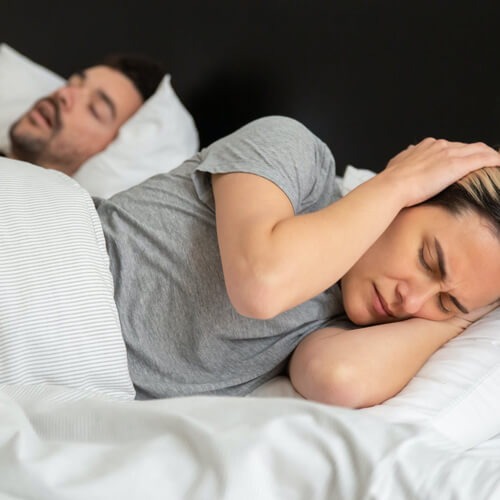What is snoring

Snoring is a noise produced when an individual breathes (usually produced when breathing in) during sleep which in turn causes a vibration of the soft palate and uvula (that thing that hangs down in the back of the throat). The word “apnea” means the absence of breathing.
All snorers have an incomplete obstruction ( a block) of the upper airway. Many habitual snorers have complete episodes of upper airway obstruction
where the airway is completely blocked for a period of time, usually 10 seconds or longer. This silence is usually followed by snorts and gasps as the individual fights to take a breath. When an individual snores so loudly that it disturbs others, obstructive sleep apnea is almost certain to be present.
There is snoring that is an indicator of obstructive sleep apnea and there is also primary snoring.
Primary Snoring, also known as simple snoring, snoring without sleep apnea, noisy breathing during sleep, benign snoring, rhythmical snoring, and continuous snoring is characterized by loud upper airway breathing sounds in sleep without episodes of apnea (cessation of breath).
- A complaint of snoring by an observer
- No evidence of insomnia or excessive sleepiness due to the snoring
- Dryness of the mouth upon awakening
- Snoring and other sounds often occurring for long episodes during the sleep period
- No associated abrupt arousals, arterial oxygen desaturation (lowered amount of oxygen in the blood) or cardiac disturbances
- Normal sleep patterns
- Normal respiratory patterns during sleep
- No signs of other sleep disorders
- A complaint of snoring by an observer
- No evidence of insomnia or excessive sleepiness due to the snoring
- Dryness of the mouth upon awakening
- Snoring and other sounds often occurring for long episodes during the sleep period
- No associated abrupt arousals, arterial oxygen desaturation (lowered amount of oxygen in the blood) or cardiac disturbances
- Normal sleep patterns
- Normal respiratory patterns during sleep
- No signs of other sleep disorders
